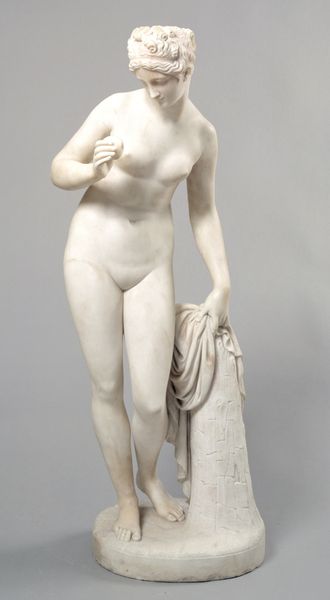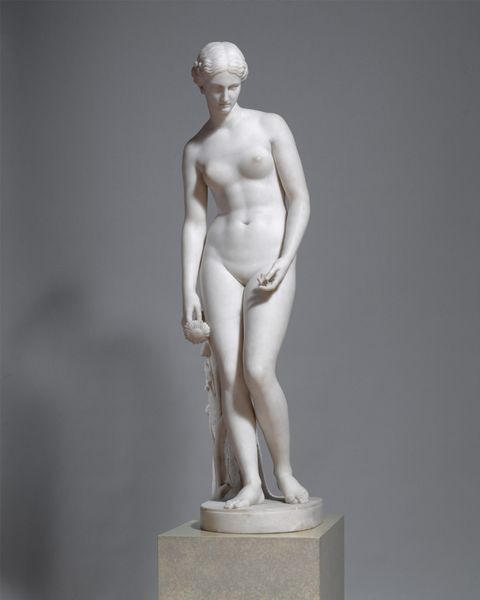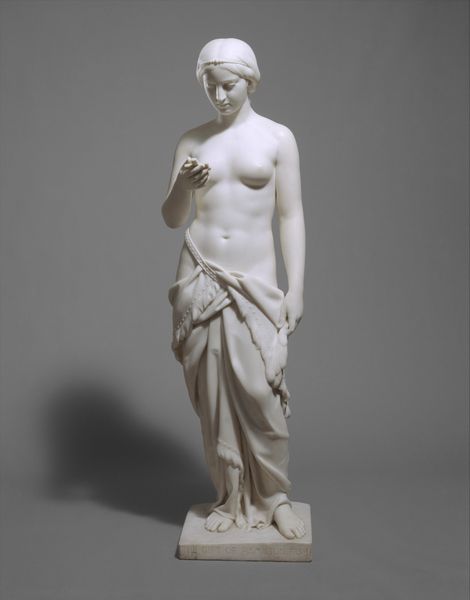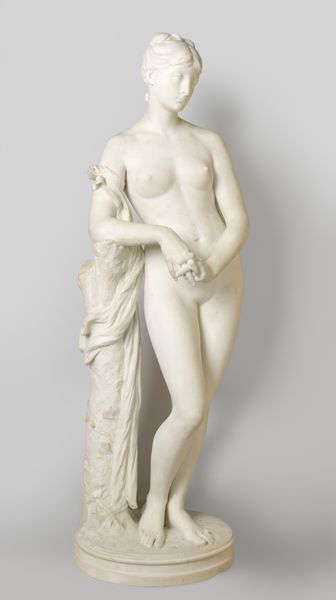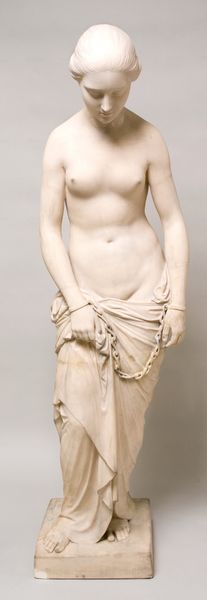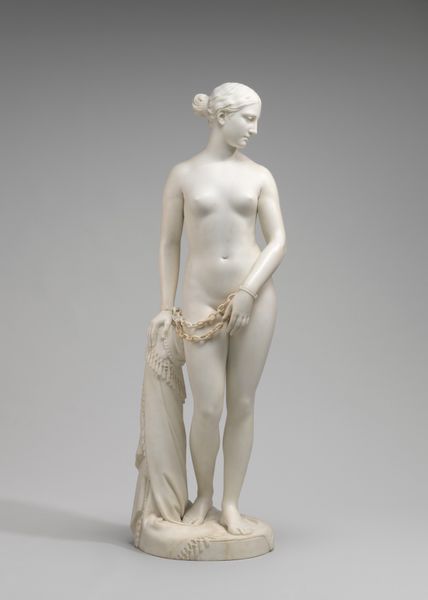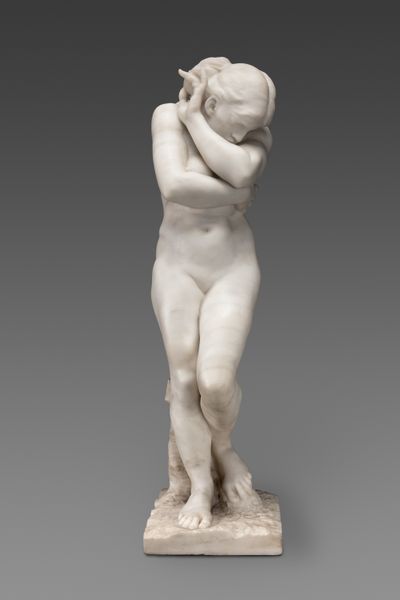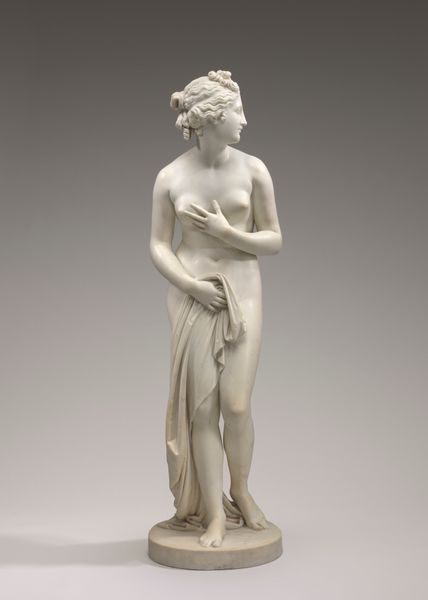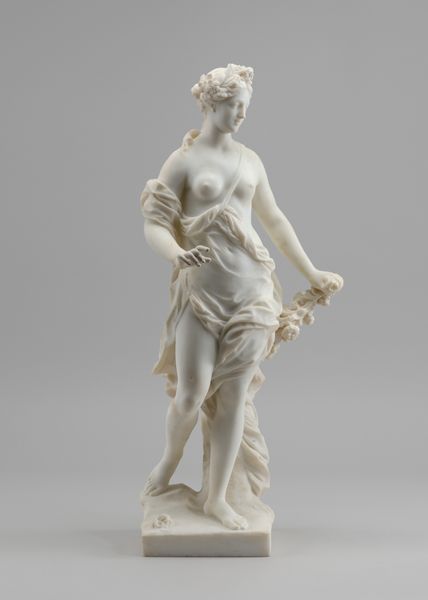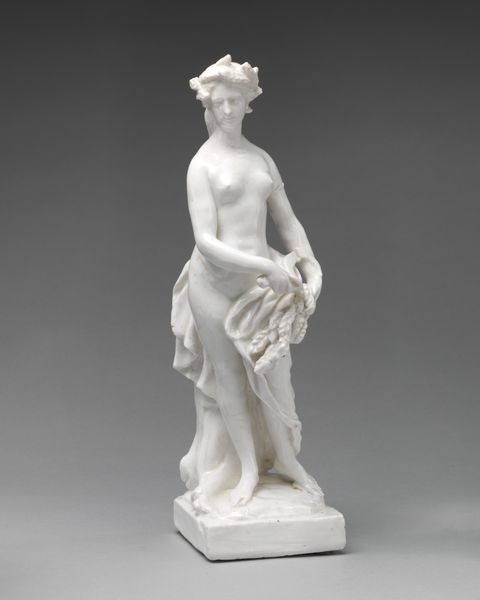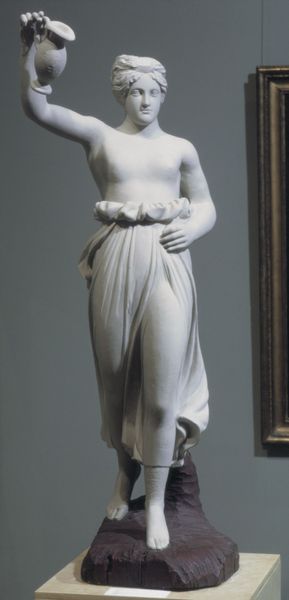
sculpture, marble
#
portrait
#
neoclacissism
#
sculpture
#
classical-realism
#
figuration
#
female-nude
#
sculpture
#
marble
#
nude
Dimensions: 71 x 18 1/4 x 24 3/4 in. (180.3 x 46.4 x 62.9 cm)
Copyright: Public Domain
Curator: Here we have Hiram Powers's "California," a marble sculpture created between 1850 and 1858, now residing at the Metropolitan Museum of Art. Editor: She’s striking. A very cool and distant beauty, perfectly smooth marble… she looks like she weighs a ton. It's impressive, yet slightly unsettling. Curator: It’s interesting you say unsettling. Powers created this figure at a time when California was rapidly changing due to the Gold Rush. This sculpture serves as an allegorical representation of the state. The nudity, of course, aligns with the Neoclassical ideals of beauty and purity but it’s loaded with the political messages as well. Editor: The marble itself is fascinating. Look how carefully polished the surfaces are, almost devoid of the typical tool marks one might expect from carving stone. The social context really enhances how we understand this too; it's no accident that in the middle of industrial expansion, artists like Powers were idealizing the natural landscape as embodied by female figures and the material qualities give it that sense of timelessness that was intended. Curator: Precisely! Powers aimed to capture the promise of California. Her averted gaze hints at the future, while the object in her hand—likely a miner's rope or a symbol of industry—represents the state's economic potential. Though there were, undoubtedly, tensions within the promises of this sort of economic expansion for different demographics of Californians. Editor: Right, the production would involve an economy of laborers extracting the raw materials… I wonder if Powers was interested in any commentary of that labor or focused primarily on what was literally on the surface. Curator: Powers would have been involved in the politics of the time, aware of both the aspirations and anxieties surrounding westward expansion and California's position in the Union, I feel the piece has commentary, whether direct or indirect. Editor: That really makes me rethink the piece, now it almost has a kind of foreboding quality. Curator: Exactly. "California" is a potent symbol of its era, capturing the hopes, dreams, and, perhaps, unspoken anxieties of a nation on the move. Editor: Well, seeing it as an artifact embedded in complex economic conditions certainly pulls you in. The smoothness now seems less purely aesthetic, and more connected with specific ideals tied to land, labor and westward expansion.
Comments
No comments
Be the first to comment and join the conversation on the ultimate creative platform.

